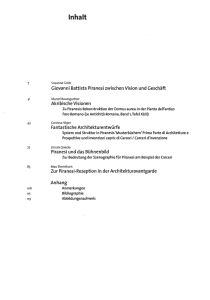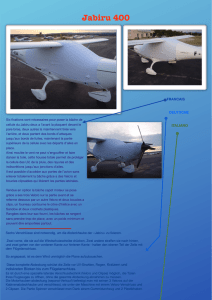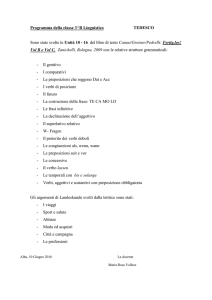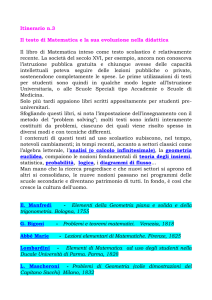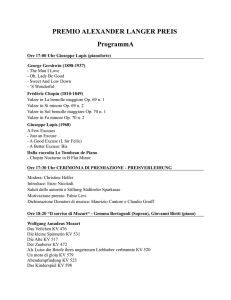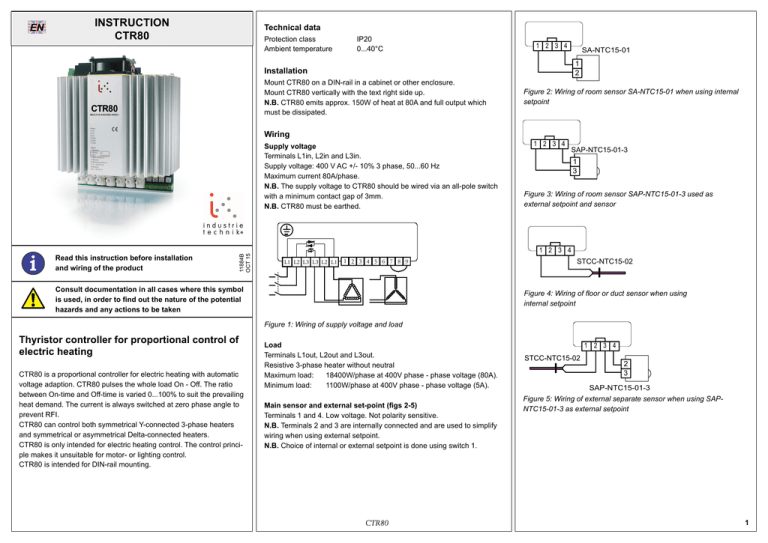
EN
INSTRUCTION
CTR80
Technical data
Protection class
Ambient temperature
IP20
0...40°C
1 2 3 4
SA-NTC15-01
1
2
Installation
Mount CTR80 on a DIN-rail in a cabinet or other enclosure.
Mount CTR80 vertically with the text right side up.
N.B. CTR80 emits approx. 150W of heat at 80A and full output which
must be dissipated.
Wiring
i
Read this instruction before installation
and wiring of the product
11884B
OCT 15
Supply voltage
Terminals L1in, L2in and L3in.
Supply voltage: 400 V AC +/- 10% 3 phase, 50...60 Hz
Maximum current 80A/phase.
N.B. The supply voltage to CTR80 should be wired via an all-pole switch
with a minimum contact gap of 3mm.
N.B. CTR80 must be earthed.
Figure 2: Wiring of room sensor SA-NTC15-01 when using internal
setpoint
1 2 3 4
SAP-NTC15-01-3
1
3
Figure 3: Wiring of room sensor SAP-NTC15-01-3 used as
external setpoint and sensor
1 2 3 4
3
1 L2 L3 L3 L2 L1
L1
1 2 3 4 5 6 7 8 9
Consult documentation in all cases where this symbol
is used, in order to find out the nature of the potential
hazards and any actions to be taken
STCC-NTC15-02
Figure 4: Wiring of floor or duct sensor when using
internal setpoint
Figure 1: Wiring of supply voltage and load
Thyristor controller for proportional control of
electric heating
CTR80 is a proportional controller for electric heating with automatic
voltage adaption. CTR80 pulses the whole load On - Off. The ratio
between On-time and Off-time is varied 0...100% to suit the prevailing
heat demand. The current is always switched at zero phase angle to
prevent RFI.
CTR80 can control both symmetrical Y-connected 3-phase heaters
and symmetrical or asymmetrical Delta-connected heaters.
CTR80 is only intended for electric heating control. The control principle makes it unsuitable for motor- or lighting control.
CTR80 is intended for DIN-rail mounting.
Load
Terminals L1out, L2out and L3out.
Resistive 3-phase heater without neutral
Maximum load: 18400W/phase at 400V phase - phase voltage (80A).
Minimum load:
1100W/phase at 400V phase - phase voltage (5A).
Main sensor and external set-point (figs 2-5)
Terminals 1 and 4. Low voltage. Not polarity sensitive.
N.B. Terminals 2 and 3 are internally connected and are used to simplify
wiring when using external setpoint.
N.B. Choice of internal or external setpoint is done using switch 1.
CTR80
1 2 3 4
STCC-NTC15-02
2
3
SAP-NTC15-01-3
Figure 5: Wiring of external separate sensor when using SAPNTC15-01-3 as external setpoint
1
Limiting sensor
Terminals 5 and 6. Low voltage. Not polarity sensitive.
When running room temperature control the supply air temperature
can be maximum and/or minimum limited. The limiting sensor is
placed in the supply air duct after the heater.
Choice of function is done using switches 2 and 3. Choice of limiting
temperatures is done on potentiometers Min and Max.
downward position. Switch the voltage on.
CTR80 should give full uninterrupted power and the LED should be lit. Check with a clamp‑on ammeter that current is
flowing to the heater.
If the LED is not lit and no current is flowing: Check that you
have power on terminals L1in, L2in and L3in and recheck the
positions of the sensor selector switches. If OK the CTR80 is
probably faulty.
If the LED lights up but no current is flowing: Recheck the heater
resistance as above. If OK the CTR80 is probably faulty.
P-controller with a proportional band of 1.5K.
External control signal
CTR80 can also be run against a 0...10V DC control signal from another
controller. Remove the wire strap between terminals 7 and 9 and connect
the control signal as shown in figure.
7 8 9
5 6
STCC-NTC15-02
Remove
wire
0-10V DC in
Signal neutral
Figure 6: Wiring of limiting sensor
Figure 8: Wiring of external control signal
N.B. As limiting sensor STCC-NTC15-02 must be used.
0V input signal will give 0% output and 10V input will give 100% output.
Minimum and maximum limit functions are not active when using an
external control signal.
Settings
Potentiometers
Setp. Setpoint 0...30°C.
Min
Minimum limit for supply air temperature when running room temperature control.
Max
Maximum limit for supply air temperature when running room temperature control.
CT
Cycle time. 6...120 seconds.
Switches
1
Down = External set point in use.
Up = Internal set point in use.
2
Down = Minimum limit not active.
Up = Minimum limit active.
3
Down = Maximum limit not active.
Up = Maximum limit active.
N.B. Minimum and maximum limiting functions may be used separately or at the same time.
Start-up and fault finding
1.
Check that all wiring is correct and that the sensor selector switches
are in the correct position.
2.
Measure the resistance between terminals L1out - L2out, L1out L3out and L2out -L3out:
At 400V phase-phase voltage: 5.8Ω<R<92Ω.
3.
Connect supply voltage and turn the setpoint knob to the maximum
value. The LED on the CTR80 should be continuously on or pulse
on/off with longer and longer ontime and eventually be continuously on.Turn the setpoint to the minimum value. The LED should
be continuously off or pulse on/off with longer and longer offtime
and eventually be continuously off. At a certain position (within the
proportional band) the LED will pulse On-Off as the CTR80 pulses
current to the heater The pulse cycle period is approx. 6...120 seconds depending on the setting of the CT-potentiometer. Check with a
clamp-on ammeter that current is flowing to the heater.
Control principle
CTR80 pulses the full load On - Off. CTR80 adjusts the mean power
output to the prevailing power demand by proportionally adjusting the
ratio between On-time and Off-time. The cycle time (=the sum of Ontime and Off-time) is adjustable 6...120 seconds.
CTR80 has zero phase-angle firing to eliminate RFI.
CTR80 automatically adapts its control mode to suit the control object
dynamics.
For rapid temperature changes i. e. supply air control CTR80 will act
as a PI-controller with a proportional band of 20K and a reset time of
6 minutes.
For slow temperature changes i. e. room control CTR80 will act as a
Something wrong?
1. Remove wiring to external sensor ( and setpoint if any). Measure the
resistance of the sensor and setpoint separately. The potentiometer
resistance varies 0...5kΩ between the lower and upper end-point.
The sensor resistance varies between 10kΩ and 15kΩ between
the upper and lower ends of the sensor temperature range. I.e. a
STCC-NTC15-01 has 15kΩ at 0°C and 10kΩ at 30°C. The resistance changes by 167Ω/°C.
2.
Leave the sensor terminals unconnected. Set all switches in the
CTR80
3.
Shut off power and short-circuit the sensor input 1 and 4. Switch on power again.
CTR80 should not give out any power at all and the LED should be extinguished. Check with a clamp-on ammeter that no current is flowing to the heater.
If the LED is extinguished but current is flowing to the heater the
CTR80 is faulty.
If the LED is lit, recheck the shorting of the sensor input terminals. If OK the CTR80 is faulty.
4.
If everything is OK this far the CTR80 and the sensor/setpoint are OK.
Shut off power, remove the wire strap from the the sensor input terminals and reconnect external sensor(s) (and setpoint if any).
Set the switches to their correct positions. Connect power.
Low Voltage Directive (LVD) standards
This product conforms to the requirements of the European Low
Voltage Directive (LVD) 2006/95/EC through product standard
EN 60730-1.
EMC emissions & immunity standards
This product conforms to the requirements of the EMC Directive 2004/108/EC through product standards EN 61000-6-1 and
EN 61000-6-3.
RoHS
This product conforms with the Directive 2011/65/EU of the European
Parliament and of the Council.
Contact
AB Industrietechnik Srl
Via Julius Durst, 70 - 39042 Bressanone (BZ) - Italy
Tel. +39 0472/830626 - Fax +39 0472/831840
www.industrietechnik.it - [email protected]
2
ISTRUZIONI
CTR80
IT
i
Prima dell’installazione e del cablaggio del
prodotto, leggere le presenti istruzioni.
1 2 3 4
STCC-NTC15-02
3
1 L2 L3 L3 L2 L1
L1
1 2 3 4 5 6 7 8 9
Consultare la documentazione per tutti i casi in cui
viene utilizzato il simbolo per individuare la natura dei
potenziali rischi e le azioni da intraprendere
Regolatore a triac trifase per il controllo
proporzionale del riscaldamento elettrico
Il CTR80 è un regolatore proporzionale per il riscaldamento elettrico
con adattamento automatico della tensione. Il CTR80 attiva e disattiva l’intero carico tramite impulsi. Il rapporto fra tempo di funzionamento e tempo di inattività varia fra 0 e 100% per adattarsi alle richiesta di calore. Le interferenze di rete sono ridotte, poichè la corrente
è commutata in corrispondenza dell’angolo di fase zero.
Il CTR80 è in grado di controllare sia riscaldatori trifase simmetrici
con collegamento a stella, che riscaldatori asimmetrici o asimmetrici
con collegamento a triangolo.
Il CTR80 è da utilizzarsi solo per la regolazione del riscaldamento
elettrico. Il principio di funzionamento lo rende infatti inadatto al controllo di motori o apparecchi di illuminazione.
Il CTR80 è progettato per il montaggio su barra DIN.
Dati tecnici
Classe di protezione
Temperatura ambiente
IP20
0...40°C
Figura 4: cablaggio del sensore a pavimento o nel
condotto quando si utilizza il setpoint interno.
Figura 1: cablaggio della tensione di alimentazione e del carico.
Carico
Morsetti L1out, L2out e L3out.
Riscaldatore resistivo trifase senza neutro
Carico massimo:18400W per fase a 400V di tensione fase-fase (80A).
Carico minimo:1100W per fase a 400V di tensione fase-fase (5A).
Sensore principale e setpoint esterno (figg. 2-5)
Morsetti 1 e 4. Bassa tensione senza polarità.
N.B. I morsetti 2 e 3 sono collegati internamente ed utilizzati per semplificare il cablaggio quando si ricorre a setpoint esterni.
N.B. È possibile scegliere fra il setpoint interno e quello esterno usando il
microinterruttore 1.
1 2 3 4
Montare il CTR80 su una barra DIN all’interno di un armadio o altro
quadro chiuso, avendo cura di posizionarlo verticalmente con i morsetti in basso.
N.B. Il CTR40 dissipa a pieno carico ca. 150 W di calore, i quali
devono essere dissipati adeguatamente.
Cablaggio
Tensione di alimentazione
Morsetti L1in, L2in e L3in.
Tensione di alimentazione: 400 V AC +/- 10% trifase, da 50 a 60 Hz
Corrente massima 80A per fase.
N.B. Il CTR80 dovrebbe essere collegato alla tensione di alimentazione attraverso un interruttore multipolare con distanza di
apertura dei contatti minima di 3 mm.
N.B. Il CTR80 deve essere dotato di messa a terra.
2
3
SAP-NTC15-01-3
Figura 5: cablaggio di un sensore esterno separato quando si
utilizza SAP-NTC15-01-3 come setpoint esterno.
Sensore di limitazione
Morsetti 5 e 6. Bassa tensione senza polarità.
Effettuando il controllo della temperatura ambiente,quella dell’aria di
mandata può essere compresa entro un limite massimo e/o minimo.
Il sensore di limitazione viene posizionato nel condotto dell’aria di
mandata a valle del riscaldatore.
La funzione viene impostata utilizzando i microinterruttori 2 e 3. La
scelta delle temperature di limitazione viene effettuata con i potenziometri Min e Max.
SA-NTC15-01
1
2
Installazione
1 2 3 4
STCC-NTC15-02
5 6
STCC-NTC15-02
Figura 2: cablaggio del sensore ambiente SANTC15-01 quando si utilizza il setpoint interno.
Figura 6: cablaggio del sensore di limitazione
N.B. Deve essere utilizzato l’STCC-NTC15-02 come sensore di
limitazione.
1 2 3 4
SAP-NTC15-01-3
Impostazioni
1
3
Potenziometri
Setp. Setpoint 0...30 °C.
MinLimite minimo della temperatura dell’aria di alimentazione
quando si effettua il controllo della temperatura ambiente.
MaxLimite massimo della temperatura dell’aria di alimentazione
quando si effettua il controllo della temperatura ambiente.
CT
Durata del ciclo 6...120 secondi.
Figura 3: cablaggio del sensore ambiente SAP-NTC15-01-3
usato come setpoint e sensore esterno.
CTR80
3
Interruttori
1
Giù = utilizzato setpoint esterno.
Su = utilizzato setpoint interno.
2
Giù = limite minimo non attivo.
Su = limite minimo attivo.
3
Giù = limite massimo non attivo.
Su = limite massimo attivo.
N.B. Le funzioni di limitazione minima e massima possono essere
usate separatamente o contemporaneamente.
Avvio e ricerca errori
1.
Controllare che tutto il cablaggio sia stato eseguito correttamente
e che i microinterruttori di selezione del sensore siano in posizione
corretta.
2.
Misurare la resistenza fra i morsetti L1out - L2out, L1out - L3out e
L2out -L3out: Ad una tensione fase-fase di 400V: 5,8 Ω<R<92 Ω.
3.
Collegare la tensione di alimentazione e impostare il valore del
setpoint sul valore massimo. Il LED sul CTR80 dovrebbe essere
sempre acceso o accendersi e spegnersi restando illuminato sempre
più a lungo per rimanere infine sempre acceso. Portare il setpoint
sul valore minimo. Il LED dovrebbe essere costantemente spento
o accendersi e spegnersi restando spento sempre più a lungo per
rimanere infine sempre spento. In una certa posizione (entro la
banda proporzionale) il LED si accenderà e si spegnerà quando il
CTR80 invia corrente al riscaldatore. Il periodo del ciclo di impulsi è
compreso tra 6 e 120 secondi circa, a seconda dell’impostazione del
potenziometro CT. Con una pinza amperometrica controllare il flusso
di corrente nel riscaldatore.
Principio di controllo
Il CTR80 attiva e disattiva l’intero carico tramite impulsi. Il CTR80
regola la potenza in uscita media in base alla domanda di potenza
adeguando proporzionalmente il rapporto fra il tempo di funzionamento e quello di inattività. La durata del ciclo (= somma del tempo
di funzionamento e di quello di inattività) può essere regolata fra 6 e
120 secondi.
Poichè la corrente è commutata in corrispondenza dell’angolo di fase
zero, le interferenze sulla rete sono notevolmente ridotte.
Il CTR80 adatta automaticamente la sua modalità di controllo per
adeguarsi alla dinamica dell’oggetto da regolare.
Per cambiamenti di temperatura rapidi, ad es. il controllo dell’aria di
mandata, il CTR80 fungerà da regolatore PI con una banda proporzionale di 20K ed un tempo di reset di 6 minuti.
Per cambiamenti di temperatura lenti, ad es. il controllo ambientale,
il CTR80 fungerà da regolatore P con una banda proporzionale di
1,5K.
Segnale di controllo esterno
Il CTR80 può essere fatto funzionare anche rispetto ad un segnale di
controllo da 0 a 10 V CC prodotto da un altro regolatore.
Rimuovere il ponte a filio posto fra i morsetti 7 e 9 e collegare il segnale di controllo come mostrato in figura 7.
Qualcosa non va?
1. Rimuovere il cablaggio del sensore esterno (e del setpoint remoto,
se presente). Misurare la resistenza del sensore e del setpoint
separatamente. La resistenza del potenziometro varia fra 0 e 5kΩ
fra gli estremi superiore ed inferiore. La resistenza del sensore varia
fra 10kΩ e 15kΩ fra gli estremi superiore ed inferiore dell’intervallo di
temperatura del sensore. Ad es., il STCC-NTC15-01 presenta 15kΩ
a 0 °C e 10kΩ a 30 °C. La resistenza cambia di 167Ω/°C.
2.
Lasciare i morsetti del sensore scollegati. Portare tutti i microinterruttori in posizione abbassata. Dare tensione.
Il CTR80 dovrebbe fornire ininterrottamente corrente e il LED
dovrebbe essere acceso. Con una pinza amperometrica controllare
il flusso di corrente nel riscaldatore.
Se il LED non è acceso e non vi è flusso di corrente: controllare che
i morsetti L1in, L2in e L3in dispongano di tensione e ricontrollare
le posizioni degli interruttori di selezione del sensore. Se è tutto in
ordine, il CTR80 probabilmente è difettoso.
Se il LED si accende ma non vi è flusso di corrente: ricontrollare la
resistenza del riscaldatore come descritto sopra. Se è tutto in ordine,
il CTR80 probabilmente è difettoso.
3.
Spegnere e collegare con un ponte a filo l’ingresso del sensore tra 1
e 4.Riaccendere.
Il CTR80 non dovrebbe fornire corrente e il LED dovrebbe essere
spento. Con una pinza amperometrica controllare che non vi sia
flusso di corrente nel riscaldatore.
7 8 9
Rimuovere
il ponte
0-10V CC in
Comune
Figura 7: Cablaggio del segnale di controllo esterno
Un segnale in ingresso di 0V darà un’uscita pari allo 0% mentre ad
un segnale in ingresso di 10V corrisponderà un’uscita pari al 100%.
Le funzioni di limitazione minima e massima non sono attive usando
un segnale di controllo esterno.
CTR80
Se il LED è spento ma vi è un flusso di corrente nel riscaldatore,
il CTR80 è difettoso.
Se il LED è acceso, ricontrollare la cortocircuitazione dei morsetti di ingresso del sensore. Se è tutto in ordine, il CTR80 è
difettoso.
4.
Se finora tutto è in ordine, il CTR80 e il sensore/setpoint sono a
posto.
Spegnere, rimuovere il ponte tra morsetti di ingresso 1 e 4 del
sensore e ricollegare il/i sensore/i esterno/i (e il setpoint se presente). Portare i microinterruttori in posizione corretta. Collegare
l’alimentazione.
Norme della Direttiva sulla bassa tensione (LVD)
Questo prodotto è conforme ai requisiti della Direttiva europea sulla
bassa tensione (LVD) 2006/95/EG attraverso le normative di prodotto
EN 60730-1
Emissioni EMC e standard di immunità
Questo prodotto è conforme ai requisiti della Direttiva EMC 2004/108/
CE attraverso le normative di prodotto EN 61000-6-1 e EN 61000-6-3
RoHS
Questo prodotto è conforme alla Direttiva 2011/65/UE del Parlamento
europeo e del Consiglio.
Contatti
AB Industrietechnik Srl
Via Julius Durst, 70 - 39042 Bressanone (BZ) - Italy
Tel. +39 0472/830626 - Fax +39 0472/831840
www.industrietechnik.it - [email protected]
4
ANLEITUNG
CTR80
DE
i
Achtung: Die Stromversorgung des CTR80 muss über einen allpoligen
Schalter mit einem Kontaktabstand > 3 mm erfolgen.
Achtung: Der CTR80 muss geerdet werden.
Diese Anleitung vor Montage und Anschluss des
Produktes bitte durchlesen
Dieses Symbol macht auf eventuelle Gefahren bei der
Handhabung des Produkts und der in der Dokumentation nachzulesenden Maßnahmen aufmerksam.
STCC-NTC15-02
Fig 4: Boden- oder Kanalfühler bei int. Sollwert
3
1 L2 L3 L3 L2 L1
L1
1 2 3 4 5 6 7 8 9
Thyristorregler für stufenlose Steuerung
von elektrischen Heizelementen
Der CTR80 ist ein stufenloser Dreiphasen-Leistungsregler mit
automatischer Spannungsangleichung für die Steuerung von elektrischen Heizelementen. Der Regler arbeitet stufenlos durch zeitproportionale Steuerung, d. h., das Verhältnis zwischen Ein- und Ausschaltdauer wird an den jeweiligen Leistungsbedarf angepasst.
Der CTR80 ist vor allem für die Anwendung zusammen mit SA, SAPGebern entweder für Zuluft- oder Raumtemperaturregelung vorgesehen. Bei Raumtemperaturregelung kann die Zulufttemperatur nach
oben und/oder nach unten hin begrenzt werden.
Der CTR80 kann sowohl für die Steuerung von symmetrischen Heizregistern in Sternschaltung als auch von symmetrischen oder asymmetrischen Heizelementen in Dreieckschaltung verwendet werden.
Der CTR80 ist nur für die Steuerung von elektrischen Heizelementen
vorgesehen und kann aufgrund seines Arbeitsprinzips nicht für die
Regelung von Lampen oder Motoren verwendet werden.
Der CTR80 ist für die Montage auf einer DIN-Schiene vorgesehen.
Technische Daten
Schutzklasse
Umgebungstemperatur IP20
0 bis 40°C, nicht kondensierend
1 2 3 4
STCC-NTC15-02
Abb 1: Versorgungsspannung. und Last
Last
Klemme L1aus, L2aus und L3aus.
3-Phasen-Heizwiderstand ohne Nullanschluss.
Max. Belastung: 18400 W/Phase bei 400V Hauptspannung (80A).
Min. Belastung: 1100 W/Phase bei 400V Hauptspannung (5A).
Hauptgeber und externer Sollwert (Abb. 2 - 6)
Klemme 1 und 4. Polaritätsunabhängig. Niederspannung.
Achtung: Klemme 2 und 3 sind intern miteinander verbunden und dienen
zur Vereinfachung der Verdrahtung, wenn ein externes Sollwertpotentiometer verwendet wird.
Achtung: Die Umschaltung von internem und externem Sollwert erfolgt
mit Funktionsumschalter 1.
1 2 3 4
SA-NTC15-01
1
2
Installation
Montieren Sie den CTR80 auf einer DIN-Schiene, in einem Schaltschrank oder in einem anderen Gehäuse. Montieren Sie den CTR80
senkrecht mit der Aufschrift richtig herum.
Achtung: Der CTR80 gibt bei voller Leistung ca. 150 W Verlust-
wärmeleistung bei 80 A ab, die durch Kühlung abgeführt werden
muss.
Anschluss
Versorgungsspannung
Klemme L1ein, L2ein und L3ein.
Spannung: 400 V AC (3-Phasen) +/- 10% , 50 bis 60 Hz
Max Strom: 80 A/Phase
1 2 3 4
Abb 2: Raumfühler SA-NTC15-01 bei ext. Sollwertgeber
2
3
SAP-NTC15-01-3
Abb 5: Ext., seperater Fühler bei Verwendung des SAPNTC15-01-3 als externer Sollwert
Begrenzungsgeber
Klemme 5 und 6. Polaritätsunabhängig. Niederspannung.
Bei Raumtemperaturregelung kann die Zulufttemperatur nach oben
und/oder nach unten hin begrenzt werden. Der Begrenzungsgeber
wird im
Zuluftkanal hinter dem Heizelement angebracht. Die gewünschte
Funktion wird mit Hilfe der Funktionsumschalter 2 und 3 eingestellt.
Die gewünschten Begrenzungstemperaturen werden mit den Potentiometern Min und Max eingestellt.
5 6
STCC-NTC15-02
Abb 6: Begrenzungsfühler
Achtung: Ein STCC-NTC15-02 muss verwendet werden.
Einstellungen
1 2 3 4
SAP-NTC15-01-3
1
3
Abb 3: Raumfühler SAP-NTC15-01-3 bei ext. Sollwert und Fühler
CTR80
Potentiometer
Setp.
Sollwert 0 bis 30°C
Min Untere Grenztemperatur für die Zuluft bei Raumtempe raturregelung im Bereich 0 bis 30°C
Max Obere Grenztemperatur für die Zuluft bei Raumtempe raturregelung im Bereich 20 bis 60°C
CT Periodendauer. 6 bis 120 s
5
Umschalter
1 Unten = Externe Sollwerteinstellung
Oben = Interne Sollwerteinstellung
2 Unten = Minimumbegrenzung ausgeschaltet
Oben = Minimumbegrenzung eingeschaltet
3 Unten = Maximumbegrenzung ausgeschaltet
Oben = Maximumbegrenzung eingeschaltet
Achtung: Minimum- und Maximumbegrenzung können zusammen
oder einzeln angewendet werden.
Inbetriebnahme und Fehlersuche
1.
Stellen Sie sicher, dass alle Kabel richtig verlegt sind.
2.
Messen Sie den Widerstand zwischen L1aus und L2aus,
L1aus und L3aus sowie zwischen L2aus und L3aus: Bei 400 V
Hauptspannung: 5,8 Ω<R<92 Ω.
3.
Schalten Sie die Versorgungsspannung ein, und drehen Sie den
Sollwertregler in die Maximalstellung. Die Leuchtdiode am CTR80
muss aufleuchten bzw. mit immer längerer Einschaltdauer blinken,
bis sie schließlich kontinuierlich leuchtet.
Drehen Sie den Regler in die Minimalstellung. Die Leuchtdiode muss
erlöschen bzw. mit immer kürzerer Einschaltdauer blinken, bis sie
schließlich gar nicht mehr aufleuchtet. In einer Zwischenposition
(wenn der Istwert dem Sollwert entspricht) blinkt die Leuchtdiode im
gleichen Takt, wie der CTR80 den Strom pulsieren lässt. Die Dauer
für einen Pulszyklus beträgt 6 bis 120 s, je nachEinstellung am CTPotentiometer. Prüfen Sie mit einem Zangenamperemeter, ob das
Heizelement bei leuchtender Diode mit Strom versorgt wird.
Regelungsprinzip
Der CTR80 steuert die gesamte angeschlossene Leistung im EinAus-Pulsbetrieb. Dabei passt der CTR80 die mittlere Leistung durch
eine stufenlose Anpassung des Verhältnisses zwischen Ein‑und
Ausschaltdauer an den jeweiligen Leistungsbedarf an.
Die Pulsdauer (= die Summe von Ein‑und Ausschaltdauer) kann am
Potentiometer CT zwischen 6 und 120 Sekunden eingestellt werden.
Der CTR80 hat eine Nulldurchgangssteuerung, um Funkstörungen
zu vermeiden. Der CTR80 passt die Regelungsmethode automatisch
der Dynamik des gesteuerten Objekts an.
Bei schnellen Abläufen, z. B. bei der Zuluftregelung, arbeitet der
CTR80 als PI-Regler mit einem festen Proportionalbereich von 20 K
und einer festen I‑Zeit von 6 Minuten.
Bei langsamen Abläufen, z. B. bei der Raumtemperaturregelung,
arbeitet der CTR80 als P-Regler mit einem festen Proportionalbereich
von 1,5 K.
Externes Steuersignal
Der CTR80 kann auch für die Steuerung mit einem externen Steuersignal (0 bis 10V DC) von einem anderen Regler verwendet werden.
Dazu muss die Brücke zwischen den Klemmen 7 und 9 entfernt und
das Steuersignal entsprechend Abb. 7 angeschlossen werden.
Wenn etwas nicht stimmt
1. Lösen Sie die Kabel zum Geber und ggf. zur externen Sollwerteinstellung. Messen Sie jeweils den Widerstand des Gebers
und/oder des Sollwertpotentiometers. Der Widerstand des Potentiometers variiert zwischen Minimal- und Maximalstellung von 0 bis 5
kΩ. Der Widerstand des Gebers variiert zwischen der Mindest- und
der Höchsttemperatur im Betriebsbereich von 15 kΩ bis 10 kΩ, d.
h. ein STCC-NTC15-01 hat 15 kΩ bei 0°C und 10 kΩ bei 30°C. Der
Widerstand ändert sich um 167 Ω/°C.
2.
7 8 9
Brücke
entfernen
0-10V DC in
Signalnull
Abb 7: Externes Regelsignal
0 V Steuersignal ergibt 0 % Aussteuerung und 10 V Steuersignal ergibt 100 % Aussteuerung. Minimum- und Maximumbegrenzung sind
in dieser Betriebsart nicht aktiv.
3.
Lassen Sie die Geberanschlüsse offen. Stellen Sie alle Umschalter
auf die untere Position. Schalten Sie die Versorgungsspannung ein.
Der CTR80 muss die gesamte Leistung ohne Unterbrechung abgeben, und die Leuchtdiode muss leuchten.
Prüfen Sie mit einem Zangenamperemeter, ob das Heizelement mit
Strom versorgt wird. Wenn die Leuchtdiode nicht leuchtet und kein
Strom fließt: Prüfen Sie, ob an den Klemmen L1ein, L2ein und L3ein
Spannung anliegt. Ist dies der Fall, liegt wahrscheinlich ein Fehler
am CTR80 vor. Wenn die Leuchtdiode leuchtet, aber kein Strom
fließt: Messen Sie den Widerstand des Heizelements wie oben. Ist
dieser in Ordnung, liegt wahrscheinlich ein Fehler am CTR80 vor.
mit einem Zangenamperemeter, ob das Heizelement mit Strom
versorgt wird. Wenn die Leuchtdiode nicht leuchtet, aber Strom
zum Heizelement fließt, liegt wahrscheinlich ein Fehler am
CTR80 vor.
Wenn die Leuchtdiode leuchtet: Prüfen Sie die Brücke an den
Gebereingängen. Wenn diese in Ordnung ist, liegt wahrscheinlich ein Fehler am CTR80 vor.
4.
Wenn bis hierhin alles einwandfrei funktioniert, sind CTR80
und Geber in Ordnung. Schalten Sie die Versorgungsspannung
aus, entfernen Sie die Brücke von den Gebereingängen, und
schließen Sie (wenn vorhanden) das externe Sollwertpotentiometer an.
Stellen Sie die Funktionsumschalter wieder in die richtige Position, und schalten Sie die Versorgungsspannung wieder ein.
Niederspannungsrichtlinie (LVD)
Dieses Produkt entspricht den Anforderungen der Niederspannungsrichtlinie 2006/95/EG (LVD) durch Erfüllung der Norm EN 60730-1.
Elektromagnetische Verträglichkeit (EMV)
Dieses Produkt entspricht den Anforderungen der EMV-Richtlinie
2004/108/EG durch Erfüllung der Normen EN 61000-6-1 und
EN 61000-6-3.
RoHS
Dieses Produkt entspricht den Anforderungen der Richtlinie
2011/65/EU des europäischen Parlamentes und des Rates.
Kontakt
AB Industrietechnik Srl
Via Julius Durst, 70 - 39042 Bressanone (BZ) - Italy
Tel. +39 0472/830626 - Fax +39 0472/831840
www.industrietechnik.it - [email protected]
Schalten Sie die Versorgungsspannung aus, und schließen Sie die
Gebereingänge 1 und 4 kurz. Schalten Sie die Versorgungsspannung wieder ein. Der CTR80 darf jetzt überhaupt keine Ausgangsleistung abgeben. Die Leuchtdiode darf nicht leuchten. Prüfen Sie
CTR80
6
INSTRUCTION
CTR80
FR
i
Veuillez lire cette instruction avant de procéder
à l'installation et au raccordement du produit.
1 2 3 4
3
1 L2 L3 L3 L2 L1
L1
STCC-NTC15-02
1 2 3 4 5 6 7 8 9
Afin d’éviter tout risque d’incident ou d’accident,
veillez à respecter les conseils de sécurité donnés
dans cette notice et identifiés par ce symbole.
Fig 4: Raccordement des sondes de gaine et de sol en cas de
fonctionnement avec une consigne interne
Fig 1: Raccordement de la tension d’alimentation et de la charge
Régulateur Thyristor pour la régulation
proportionnelle du chauffage électrique
CTR80 est un régulateur proportionnel trois phases pour chauffage
électrique avec adaptation de tension automatique. CTR80 impulse
pour toute la charge à ToR. Le ratio de temps en marche et temps en
arrêt est adapté 0...100% à la demande actuelle de chauffage.
CTR80 peut réguler des éléments chauffant symétriques, connectés
en étoile et à 3 phases ainsi que des éléments chauffant symétriques
ou asymétriques connectés en triangle.
CTR80 est conçu uniquement pour la régulation du chauffage électrique. Le principe de régulation n’est pas convenable pour la régulation de moteur ou d’illumination.
CTR80 est conçu pour montage sur rail DIN.
Charge
Bornes L1out, L2out et L3out.
Elément chauffant résistive 3 phases sans neutre.
Charge maximale: 18400W/phase at 400V phase – tension de phase (80A).
Charge minimale: 1100W/phase at 400V phase - tension de phase (5A).
Sonde principale et point de consigne externe (ills. 2-5)
Bornes 1 et 4. Basse tension. Non-sensitive aux polarités.
N.B. Les bornes 2 et 3 sont connectées en interne et sont utilisées pour
faciliter le raccordement quand des points de consigne externes sont
utilisés.
N.B. Le choix de point de consigne interne ou externe se fait avec
l’interrupteur 1.
Caractéristiques Techniques
Indice de protection
Température ambiente
IP20
0...40°C
Installation
Montez le CTR80 sur un rail DIN dans une armoire ou autre
recouvrement.
Montez CTR80 verticalement avec le texte placé vers le haut.
N.B. Le CTR80 émet environ 150W de chaleur à 80A qui doit être
refroidie.
1 2 3 4
SA-NTC15-01
1
2
2
3
SAP-NTC15-01-3
Fig 5: Raccordement en cas de sonde séparée externe et d’un
SAP-NTC15-01-3 comme réglage de consigne seulement
Sondes limiteurs
Bornes 5 et 6. Basse tension. Non sensitive aux polarités.
Pendant la régulation de température ambiante, l’air d’alimentation
peut être limité à un niveau maximal/minimal. La sonde limiteur est
placée dans la gaine d’alimentation après la élément chauffant.
Le choix de fonction se fait en utilisant les interrupteurs 2 et 3. Le
choix
de limite de température se fait sur les potentiomètres Min et Max.
5 6
STCC-NTC15-02
Fig 2: Raccordement de la sonde d’ambiance SA-NTC15-01 en cas
de fonctionnement avec une consigne interne
Fig 6: Raccordement d’une sonde de limite
N.B. La STCC-NTC15-02 doit être utilisée.
Raccordement
Tension d’alimentation
Bornes L1in, L2in et L3in.
Tension d’alimentation: 400 V AC +/- 10% 3 phases, 50...60 Hz
Courant maximal: 80A/phase.
N.B. La tension d’alimentation au CTR80 doit être raccordée via un
interrupteur omnipolaire avec un intervalle de contact d’au moins
3mm.
N.B. CTR80 doit être mis à la terre.
1 2 3 4
STCC-NTC15-02
1 2 3 4
SAP-NTC15-01-3
1
3
Fig 3: Raccordement en cas de régulation de température ambiante
CTR80
Paramètres
Potentiomètres
Setp. Point de consigne 0...30°C.
Min
Température minimal de l’air d’alimentation pendant
régulation de température ambiante.
Max
Température maximal de l’air d’alimentation pendant
régulation de température ambiante.
CT
Temps de cycle. 6...120 secondes.
7
Interrupteurs
1
Vers le bas = Point de consigne externe utilisé.
Vers le haut = Point de consigne interne utilisé.
2
Vers le bas = Limite minimale désactivée.
Vers le haut = Limite minimale activée.
3
Vers le bas = Limite maximale désactivée.
Vers le bas = Limite maximale activée.
N.B. Les fonctions de limite minimale et maximale peuvent être utilisées à part ou en même temps.
Mise en marche et recherche d’erreur
1.
Vérifiez que tout raccordement est correcte et que les interrupteurs
de selection de sonde sont dans la bonne position.
2.
Mesurez la résistance entre les bornes L1out – L2out, L1out – L3out,
et L2-out – L3out: À tension principale 400V: 7.3W<R<92W.
3.
Branchez la tension d’alimentation et tournez la poignée de point
de consigne vers la valeur maximale. Le LED sur le CTR80 doit
s’allumer ou clignoter avec un temps en marche graduellement plus
long jusqu’à ce qu’il reste allumé.
Tournez la poignée vers la valeur minimale. Le LED sur le CTR80
doit s’éteindre ou clignoter avec un temps en arrêt graduellement
plus long jusqu’à ce qu’il reste éteint. A une certaine position de la Pbande, le LED clignotera avec le même rythme que les impulsation
de courant du CTR80.
Le temps de cycle de l’impulsation dépend du réglage du potentiomètre CT, entre 6...120 secondes. Vérifiez avec une pince
ampèremétrique que du courant va à l’élément chauffant.
Principe de régulation
Le CTR80 impulse toute la charge ToR. Le CTR80 adapte la moyenne de tension à la demande de tension en ajustant proportionnellement le ratio entre temps en marche et temps en arrêt. Le temps
de cycle (=la somme de temps en marche et temps en arrêt) est
ajustable 6...120 secondes avec le potentiomètre.
Le CTR80 a un angle de phase zéro pour éviter les perturbations
radioélectriques.
Le CTR80 adapte automatiquement sa méthode de régulation pour
mieux correspondre au dynamique de l’objet régulé.
Pour des changements de température rapides, par ex. régulation
d’air d’alimentation, le CTR80 sera comme un régulateur PI avec
une bande proportionnelle de 20K et un temps de réarmement de 6
minutes.
Pour des changements de température lentes, par ex. régulation
d’ambiance, le CTR80 sera comme un régulateur P avec une bande
proportionnel de 1,5K.
Signal de commande externe
Le CTR80 peut aussi être utilisé pour la régulation avec un signal de
commande externe 0...10V DC d’un autre régulateur.
Enlevez le shunt entre les bornes 7 et 9 et connectez le signal de
commande en accord avec l’illustration.
En cas de problème
1. Enlevez le raccordement de la sonde externe et, s’il y en a, le point
de consigne. Mesurez, à part, la résistance de la sonde et/ou du
point de consigne. La résistance du potentiomètre varie 0...5kW entre le niveau inférieur et supérieur. La résistance de la sonde varie
10kW et 15kW entre le niveau supérieur et inférieur de sa plage
de températures. C.-à-d. que la STCC-NTC15-01 a 15kW à 0°C et
10kW à 30°C. La résistance change 167W/°C.
2.
7 8 9
Retirer le
cavalier
0-10V CC in
Neutre signal
Fig 7: Signal de commande externe
Un signal d’entrée 0V donne une sortie de 0% et 10V donne une
sortie
de 100%.
Les fonctions de limite minimale et maximale ne sont pas acitvées
quand un signal de commande externe est utilisé.
3.
Ne connectez pas les entrées des sondes. Mettez tous les interrupteurs dans la position inférieure. Branchez la tension d’alimentation.
La tension du CTR80 doit être pleine et sans interromption et le LED
doit être allumé. Vérifiez avec une pince ampèremétrique que du
courant va à la élément chauffant.
Si le LED est éteint et il n’y a pas de courant: Vérifiez qu’il a y de la
tension aux bornes L1in, L2in et L3in, et revérifiez les positions des
interrupteurs de sélection de sonde. Si tout est OK, il y a probablement un défaut dans le CTR80.
Si le LED est allumé mais il n’y a pas de courant: Revérifiez la
résistance de l’élément chauffant. Si c’est OK, il y a probablement un
défaut dans le CTR80.
Si le LED est éteint mais il y a du courant qui va à la élément
chauffant, il y a probablement un défaut dans le CTR80.
Si le LED est allumé, revérifiez le court-circuitage des entrées
de sonde. Si cela est OK, il y a probablement un défaut dans le
CTR80.
4.
Si tout est OK jusqu’ici, le CTR80 et la sonde/le point de consigne sont OK.
Déconnectez la tension d’alimentation, enlevez le shunt des
entrées de sonde et reconnectez la/les sonde(s) et, s’il y en a,
le/les point(s) de consigne externes. Mettez les interrupteurs en
position. Branchez la tension.
Directive basse tension
Ce produit répond aux exigences de la directive 2006/95/CE du
Parlement européen et du Conseil (BT) au travers de la conformité à
la norme EN 60730-1. Il porte le marquage CE.
Directive compatibilité électromagnétique
Ce produit répond aux exigences de la directive 2004/108/CE du
Parlement européen et du Conseil (CEM) au travers de la conformité
aux normes EN 61000-6-1 et EN 61000-6-3.
RoHS
Ce produit répond aux exigences de la directive 2011/65/UE du Parlement européen et du Conseil.
Contact
AB Industrietechnik Srl
Via Julius Durst, 70 - 39042 Bressanone (BZ) - Italy
Tel. +39 0472/830626 - Fax +39 0472/831840
www.industrietechnik.it - [email protected]=
Déconnectez la tension d’alimentation et court-circuitez les entrées
de sonde 1 et 4. Rebranchez la tension.
Le CTR80 ne doit pas donner du courant et le LED doit être éteint.
Vérifiez avec une pince ampèremétrique qu’il n’y a pas du courant qui va à la élément chauffant.
CTR80
8

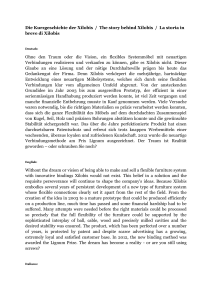
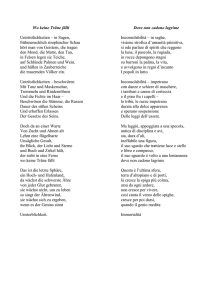
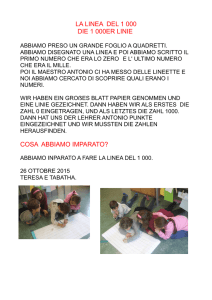
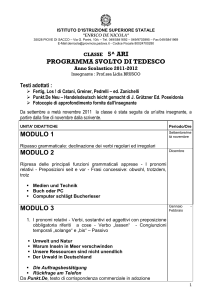
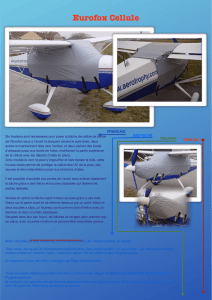
![Ricerca nr. 1 [MS WORD 395 KB]](http://s1.studylibit.com/store/data/000076742_1-2ede245e00e21c823e517529e1c3be46-300x300.png)
